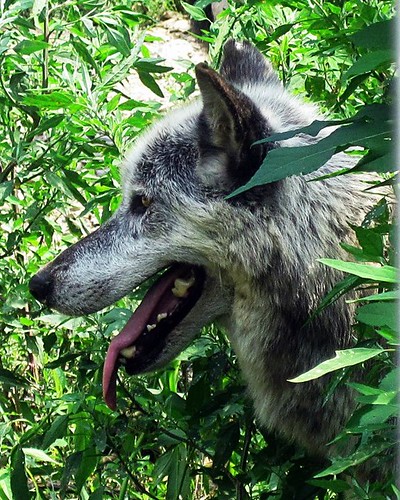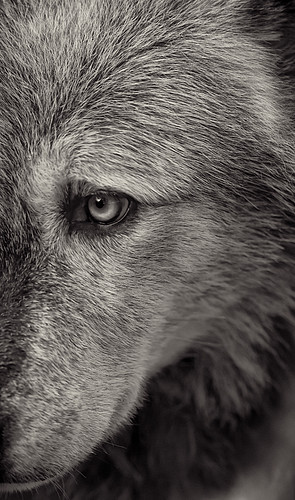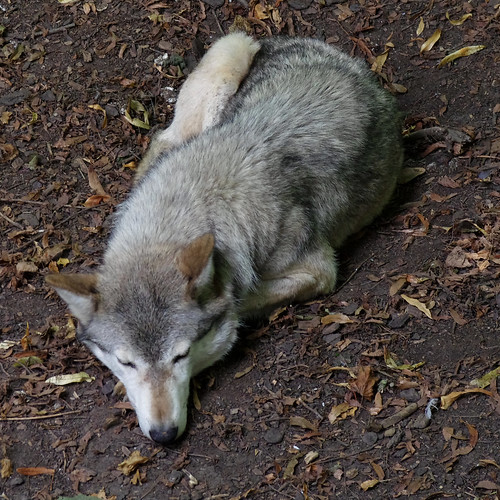Officials will consider this week adding California's only wolf to
the list of state's threatened and endangered species, nine months after
it moved to the state from Oregon.
But the wolf wouldn't be added to the list this year. The California
Fish and Game Commission will consider Wednesday to further study
whether the gray wolf should be listed as a threatened or endangered
species.
That means another year of studying the one wolf in California and gray wolves in general, said Dan Yparraguirre, the
California Department of Fish and Game's deputy director of wildlife and fisheries.
Considering the controversy that has surrounded the wolf, known as
OR-7, Wednesday's meeting likely will be well-attended, he said.
"There's going to be two very polar positions on this thing," Yparraguirre said.
Siskiyou County Supervisor Grace Bennett said the county is sending a
representative to the meeting to testify against the proposal.
"We don't think it's a good idea," Bennett said. "The wolf they are
bringing back is a totally different species" than what lived in the
state in the early part of the 20th century.
She said the livestock raised in Siskiyou County could become prey
for wolves, and the deer herds that already are suffering could be
further harmed, she said.
Born into a pack in northeast Oregon in 2010, OR-7 migrated into the
southern part of the state last fall. When he finally crossed the border
into California in December he became the first wild wolf in California
since 1924, according to the DFG.
Since then he has trotted through several Northern California
counties, including Shasta, Tehama and Siskiyou counties. He even
returned to southern Oregon for a time.
Wildlife officials have been monitoring his movements through a GPS
tracking device on his collar and posting his locations on the DFG's
website.
In March, the Center for Biological Diversity, Big Wildlife, the
Environmental Protection Information Center and the Klamath-Siskiyou
Wildlands Center submitted a request to list the wolf.
During the past summer, OR-7 has been traveling between northern
Plumas and eastern Tehama counties. The most recent satellite reading is
from Friday, when he was in western Plumas County, according to the
DFG.
OR-7 already is protected under the federal Endangered Species Act, according to the DFG.
Adding gray wolves to the state list of threatened or endangered
species would provide protection for the animals if the federal
government delists them, said Amaroq Weiss, Northern California
representative for the California Wolf Center.
Weiss said she will speak at the commission meeting on behalf of her organization and two other groups.
The wolf needs protection because it is a population of only one, and
if it doesn't reproduce there, gray wolves will again be extinct in
California. She said the wolf should not be allowed to go extinct.
"It's bringing back a piece of our natural history," Weiss said.
Yparraguirre said the state is not advocating reintroducing more wolves into the state to ensure the survival of the species.
But the environmental groups support reintroduction, according to the
state. A report to the commission says the environmental groups that
proposed the wolf's listing recommended taking five steps to ensure wolf
populations could recover to the point they're no longer considered
endangered:
List the wolf as an endangered species.
Develop a recovery plan showing suitable habitat for the wolf and conservation goals.
Address human-wolf conflicts and wolf impacts on livestock and other property.
Identify and resolve barriers that keep wolves from dispersing.
Support establishing breeding pairs in the state if it doesn't occur by 2017.
Bob Williams, chairman of the Tehama County Board of Supervisors,
said the county is not sending a representative to the meeting. But the
board sent a letter to the commission opposing listing the wolf.
The letter includes a report that says the rangeland in Tehama County
potentially could support up to 173 wolves, which annually could
consume from 132 to 1,184 head of cattle, or 166 to 1,496 bison, or
1,263 to 11,366 deer.
"We believe wolves would be a threat that is incompatible with humans
(hikers, campers, residents) and ranchers (specifically livestock) in
Tehama County, and the potential impacts would weigh as a heavy burden
on the county, its citizens and agricultural industry," the letter says.
source



















